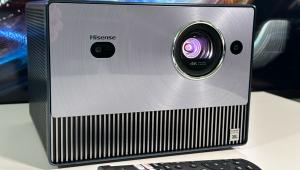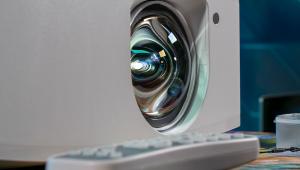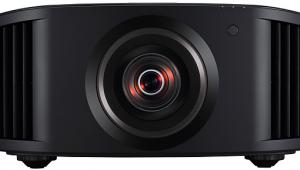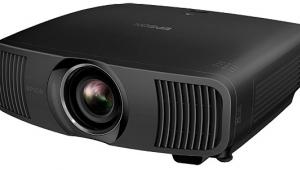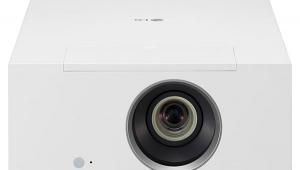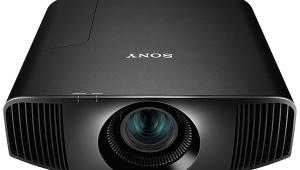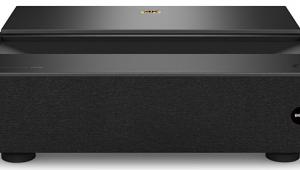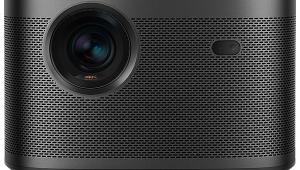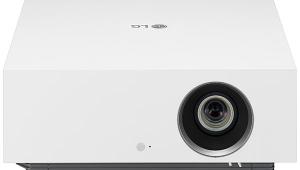Epson Home Cinema 4000 4K Enhanced 3LCD Projector Review Test Bench
Full-on/full-off contrast ratio in HD/SDR: 2,756:1
Measurements were made with SpectraCal CalMAN software, Photo Research PR-650 and Klein K-10A color meters, a Murideo pattern generator, and an Oppo UDP-203 Ultra HD Blu-ray player.
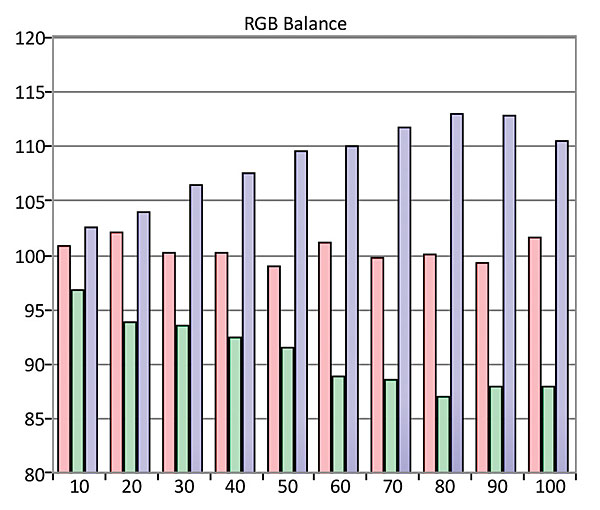
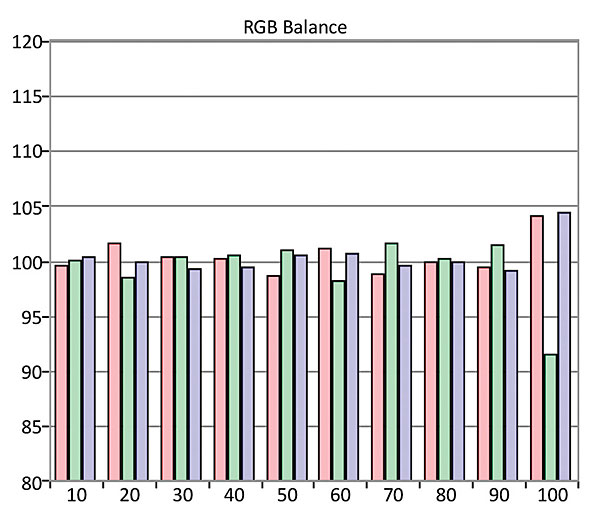
The contrast ratio above was measured in the Cinema Color Mode directly from my 96-inch-wide, 2.35:1, Stewart Filmscreen StudioTek 130 screen (gain 1.3)—Auto Iris on High Speed, Power Consumption (lamp) on Medium, projector at mid-zoom. Peak white level was 24.9 foot-lamberts, and black level 0.009 ft-L. With Auto Iris off, the contrast ratio dropped to 1,186:1. At full zoom (the largest possible image) and with the Iris on High Speed, the full-on/full-off contrast ratio measured 2,433:1, and at minimum zoom, 2,457:1.
In HDR, with Power Consumption (lamp) on High and the Auto Iris on High Speed, Contrast on 75, the full-on/full-off contrast ratio measured 3,016:1, due primarily to a higher peak-white level (the black level roughly doubled from the SDR reading).
With SDR gamma set to the –1 setting, gamma measured just a shade lower (brighter) than the BT.1886 SDR gamma standard. Pre-calibration, using the default Cinema mode, the white balance Delta E values ranged from a low of 7.73 at 20% to a high of 13.37 at 80%. Post-calibration, the low value was 1.99 at 80% and the high 8.66 at 100% (the latter was an outlier, with no other level higher than 3.05). The color point Delta Es peaked at 13.37 before calibration but were all below 1.64 after calibration, except for green at 5.38. Green was significantly oversaturated in SDR, and there wasn’t enough range in the CMS to bring it into line.
(Delta E indicates how close the color comes to the standard at each point in the brightness range. Values below 3—some experts allow for 4—are generally considered visually indistinguishable from ideal. From 3.0 to 10.0, most viewers will notice the deviations but will likely find them tolerable.)

In HDR, the best match to the EOTF (HDR gamma) curve came at a gamma setting of +2 and a Contrast setting of 95. Lowering the Contrast reduced high-level clipping but also lowered the pre-clipping EOTF curve, making the image in that region darker than designed. Any setting involved some compromise between accu- rate brightness and clipping, not uncommon in HDR and particularly with projectors. After calibration, the maximum HDR grayscale Delta E was 2.1 from 20% to 100%, except for the 40%-to-60% region (the “knee” of the EOTF—or HDR gamma—curve), where luminance deviations pushed the Delta E up to a maximum of 7.7 at 50%. The color point Delta Es, post-calibration, ranged from a low of 4.1 in red to a high of 8.67 in magenta. The peak white level in this situation was 174 nits, or 51 ft-L.
The peak HDR brightness onscreen varied little regardless of how much of the screen was covered in 100% white (10%, 25%, 50%, or 100%).—TJN


